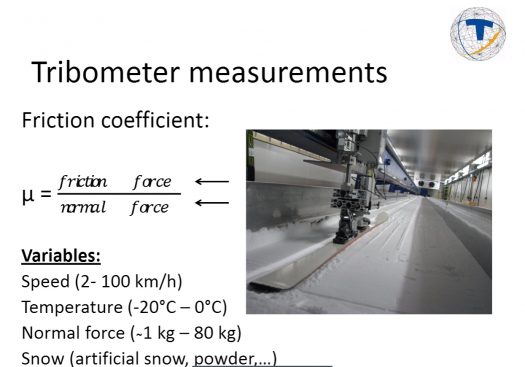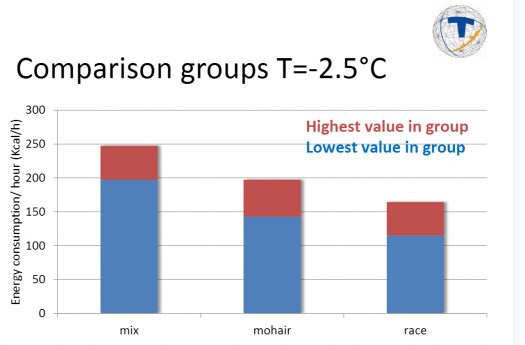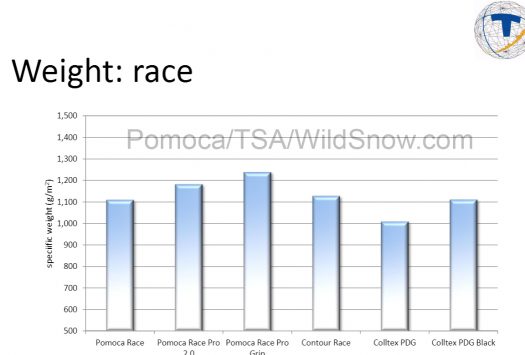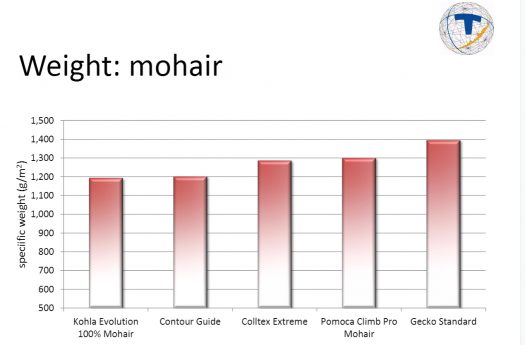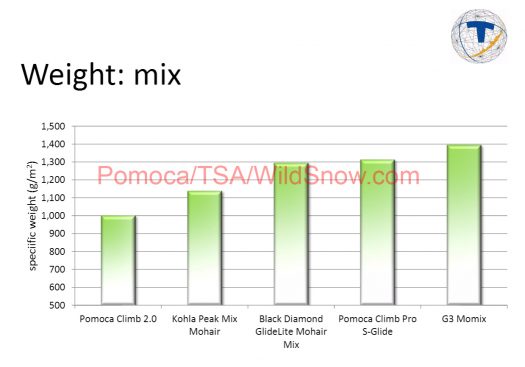Last winter, Pomoca climbing skin company (owned by Salewa) teamed up with the Technology Centre for Ski and Alpine Sports (TSA) in Innsbruck, Austria to do some scientific skin testing. (I appreciated being invited, but did not attend, was burnt out on air travel after an epic winter of flying around, enjoying reliable modern airline companies.)
Most importantly in this, an attempt was made to standardize the “skier” by using a machine known as a Tribometer that glided the skin across a consistent snow surface, while measuring “tribological quantities” such as friction. Apparently, most Tribometers are small to medium size devices used, for example, to measure how well a seat cushion would prevent you from sliding off. The TSA tribometer is huge, a big long thing that shoots along a track — with a ski in tow.
Video below is the “rail” tribometer used by TSA for testing ski and skin friction. Embedded from Youtube.
We found this whole thing quite interesting, while limited in various ways the astute reader will no doubt infer.
The evaluated samples:
Race – Colltex – PDG
POMOCA – Race
Colltex – PDG Black
Contour – Race
POMOCA – Race Pro Grip
POMOCA- Race Pro 2.0
Mohair POMOCA – Climb Pro Mohair
Colltex – Extreme
Kohla – Evolution 100 % Mohair
Contour – Guide
Gecko – Standard
Mix G3 – Momix
POMOCA – Climb 2.0
Colltex – Mix
Montana – Montamix
Contour – Easy
BD – GlideLite Mohair Mix
Kohla – Peak MixMohair
POMOCA – Climb Pro S-Glide
Before we go farther, let’s mention the obvious problem areas here. Firstly, it’s too bad a skin company sponsored a test that included their own product. A non-profit alpine club or some other third party would have been much better. Secondly, no matter how hard these guys tried to test skins on a variety of snow types at a range of temperatures, they only evaluated a small slice of what’s possible in real life. Thirdly, manufacturing variations are a real part of climbing skin performance. For example, the actual batch of mohair (year, region etc.) can make a noticeable difference in the glide and grip of a skin sold under the same model name, color, and so forth. By that same token, I’ve seen the same model-brand of a nylon skin change from season to season. So let’s take this all with a grain of salt — yet give credit where credit is due as this is a noble effort to quantify what we’ve all experienced on our feet as the differences between climbing skins.
The boffins at TSA measured skins under the following constraints:
• Load of 7% bodyweight and speed of 2 m/s
• Load of 30% bodyweight and speed of 4 m/s
• Load of 100% bodyweight and speed of 2 m/s
Measurements above at temperatures of -2.5°C, -5°C and -20°C. The graphs reflecting the friction values of race, mohair and mix skins are given in Annex A.
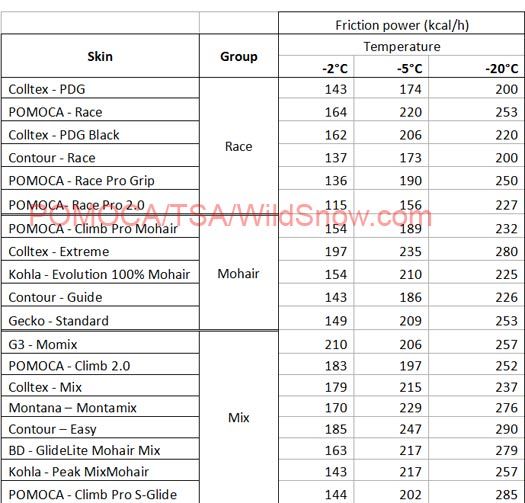
Calculated friction energy expenditure per hour for skins tested at temperatures of -2°C, -5°C and -20°C
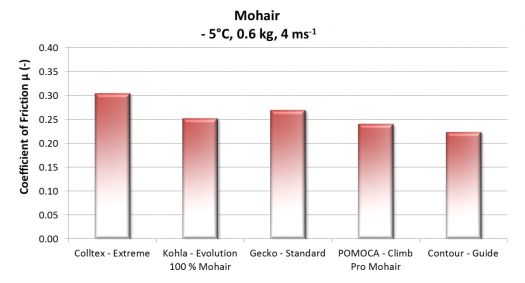
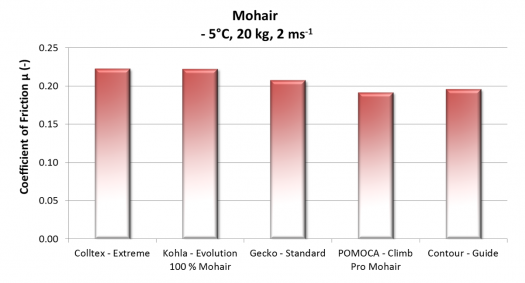
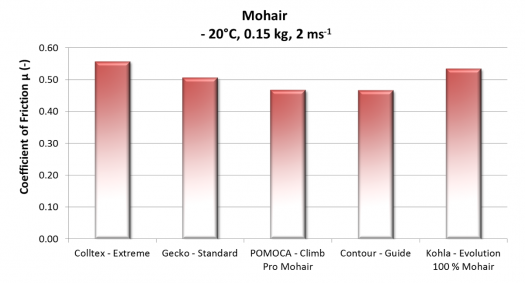
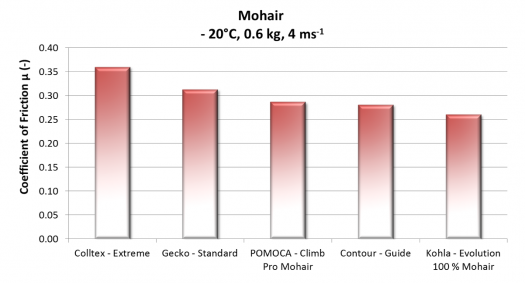
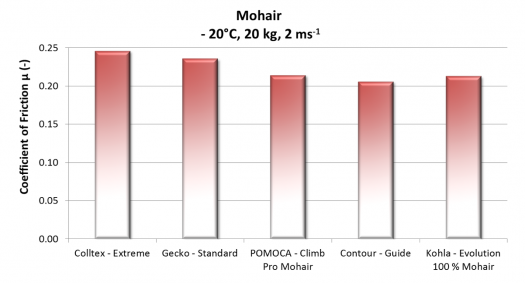
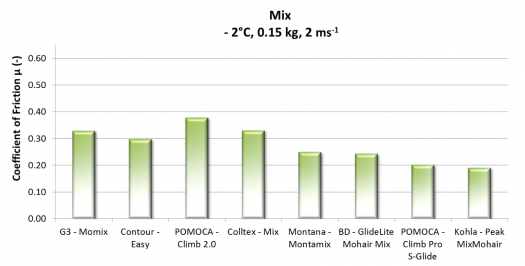


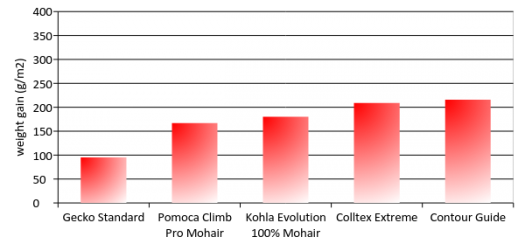

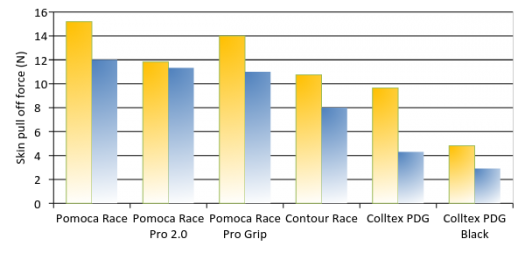


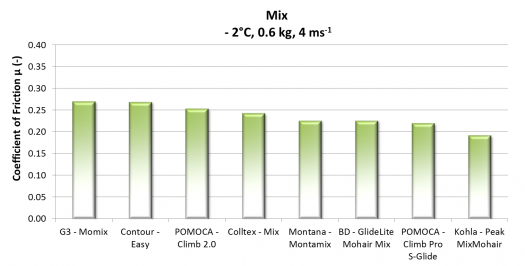
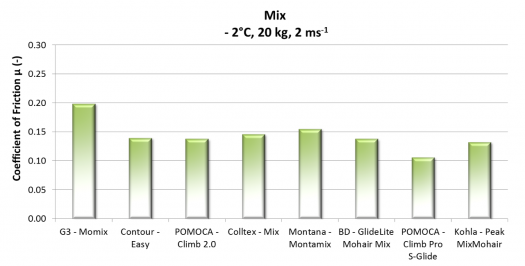
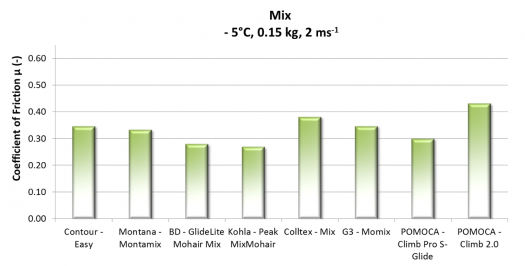
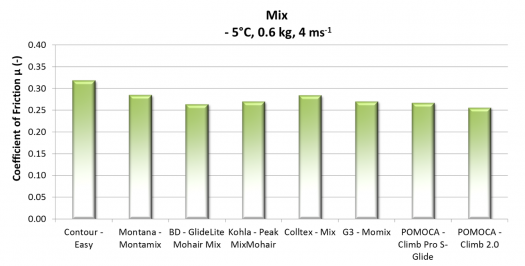
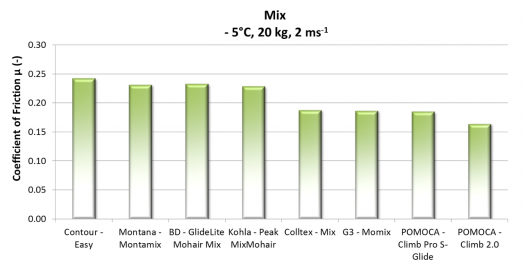
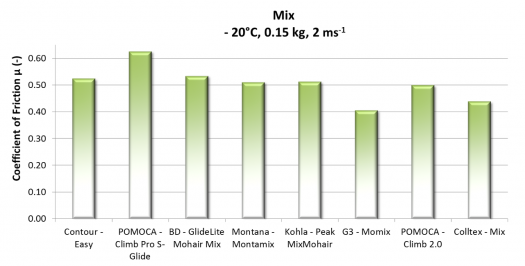
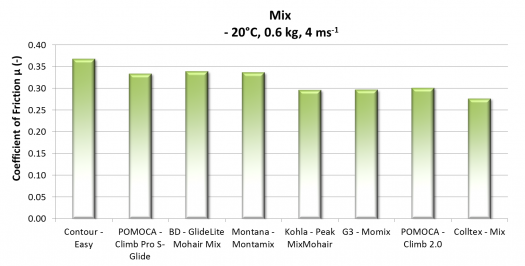
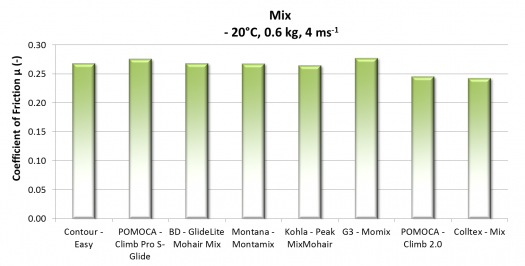

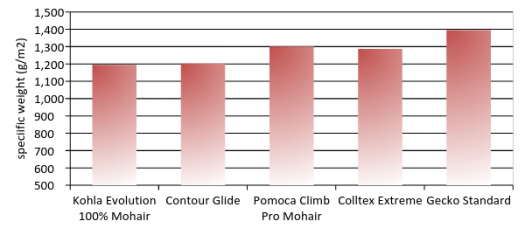
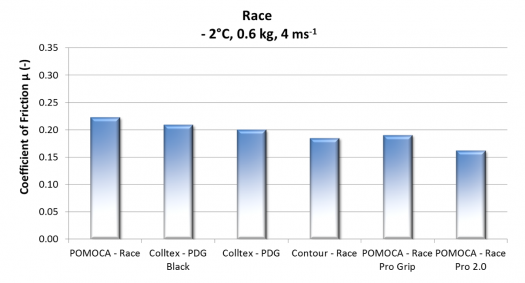
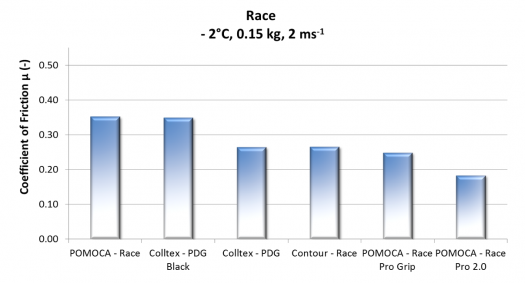
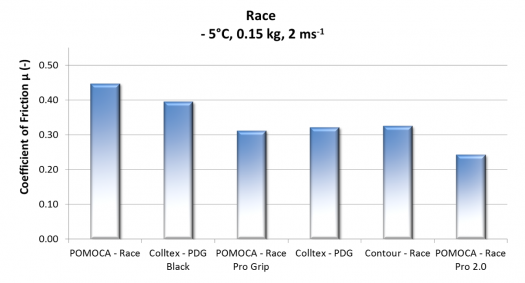
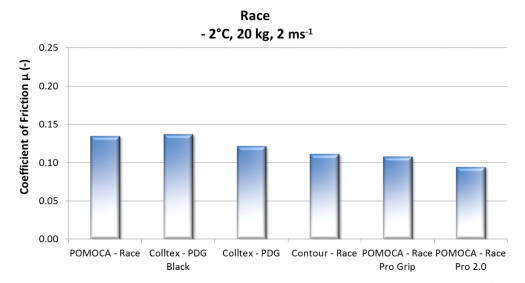
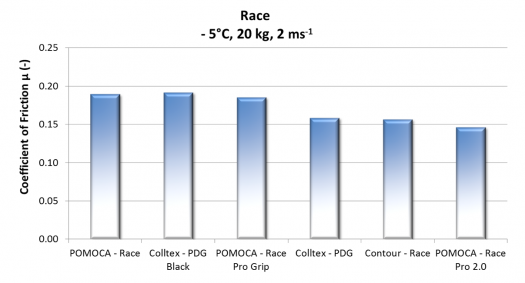
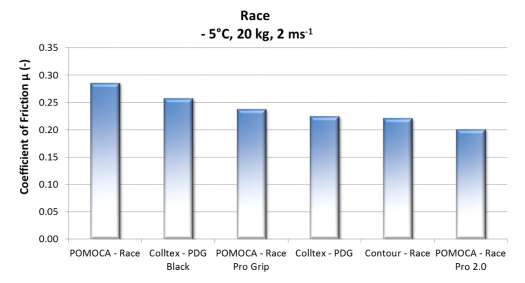
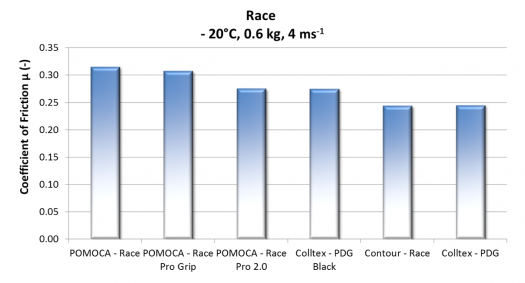
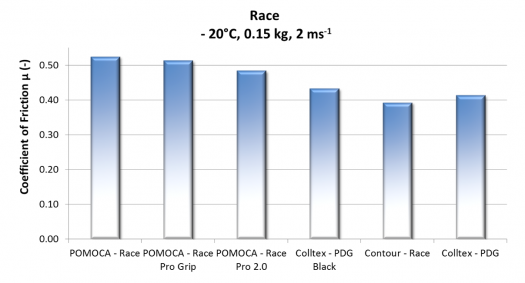
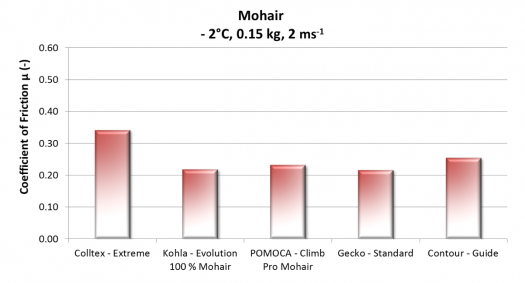
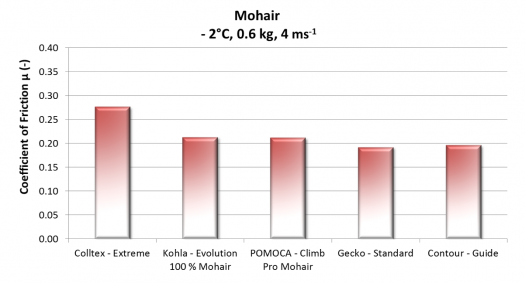
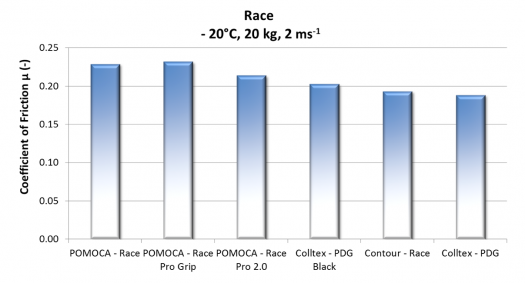
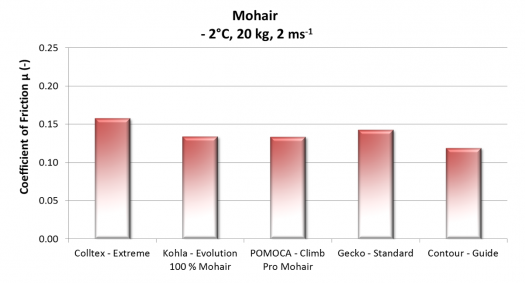
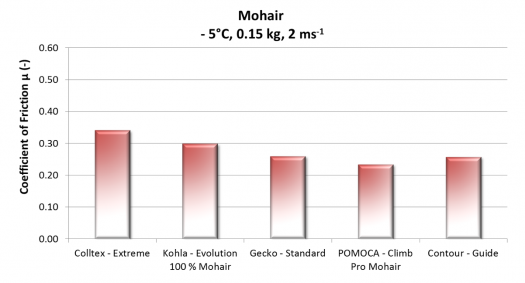
Mohair -5 .15 kg
They did a field test with humans that did not yield useful results. The human test (which you can do at home) involved sporting a standardized reference skin on one ski and a test skin on the other. I’d guess the problem with this is too many variables. Weight of skier, stride style, mental attitude, exact temperature and state of snow when the testing is performed, and more. According to a supplied press release “The direct comparisons with the reference skins have provided inconclusive results… As in all Lab tests the results are divided into the groups race, mohair and mix. Due to the variation of the reviews and partially very small differences between the skins, the statistics must be interpreted only as a rough estimate.”
Regarding the human testing, we feel it can be done but it’s time consuming. What you really have to do is evaluate one “test set” (meaning a reference skin on one foot and test skin on the other) over multiple days of ski touring in significantly different conditions. Even then, it’s only you not a large group doing the same test. A less than ideal situation. Now you know why, while we do a bit of such “A B” skin testing here at WildSnow, we don’t go crazy with it and draw dogmatic conclusions. What we usually do is evaluate weight (some skins are quite heavy), then simply make sure the skin has what we feel is good glide. We don’t worry too much about how skins climb. Worldwide, most ski tourers follow tracks designed for glide and efficiency. If you need grip, fine, just get some orange Ascensions or the new Voile offering (made of same fabric) and don’t look back as someone in the Wasatch might be gaining on you.
See more Wildsnow climbing skin content.
Now that you know what might glide the way you want, shop for climbing skins.
WildSnow.com publisher emeritus and founder Lou (Louis Dawson) has a 50+ years career in climbing, backcountry skiing and ski mountaineering. He was the first person in history to ski down all 54 Colorado 14,000-foot peaks, has authored numerous books about about backcountry skiing, and has skied from the summit of Denali in Alaska, North America’s highest mountain.

